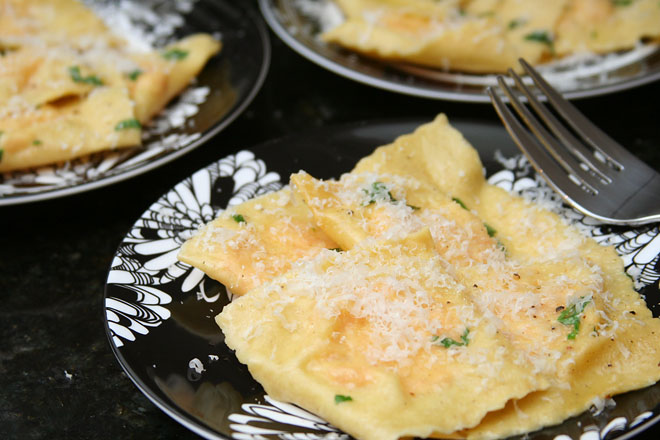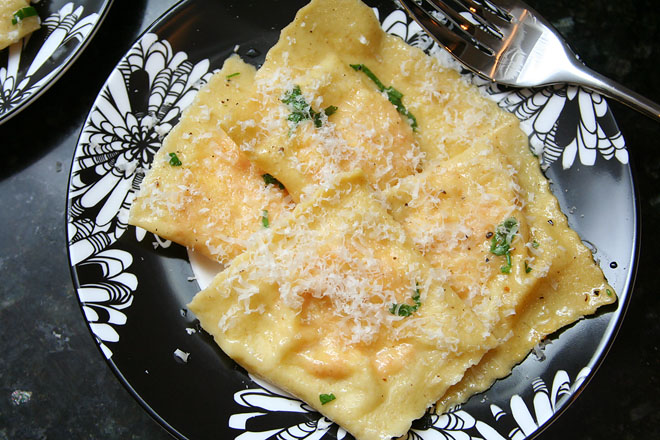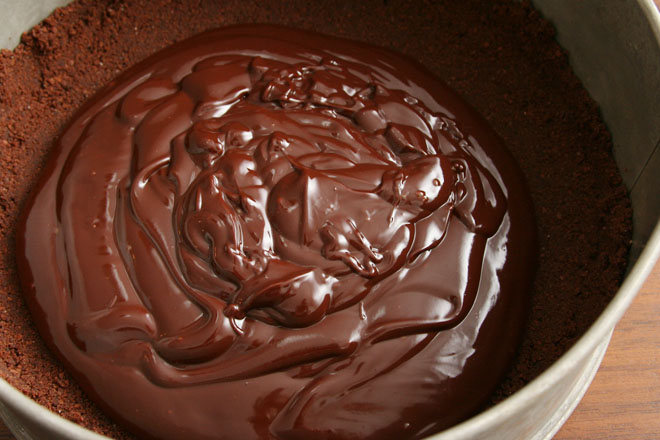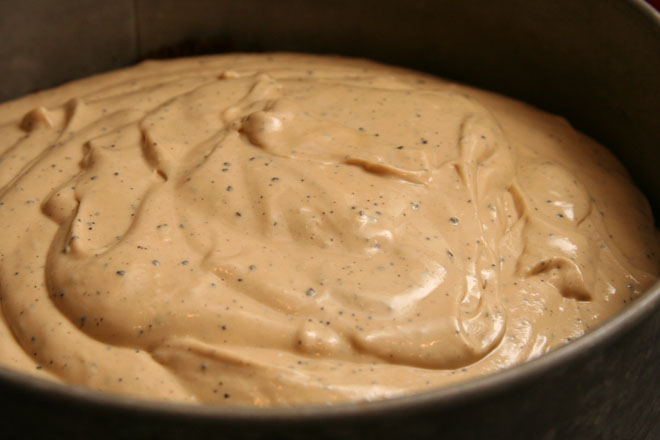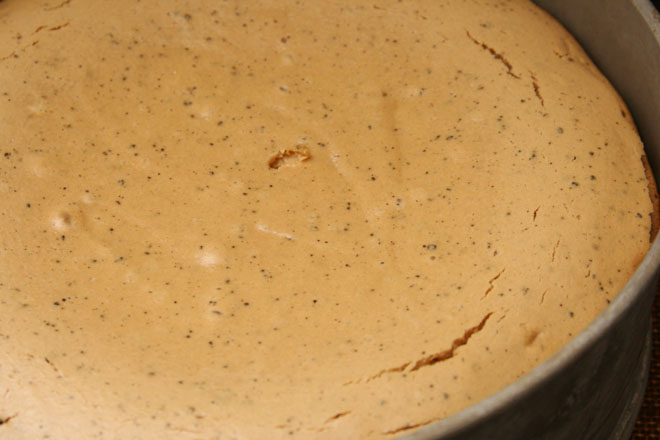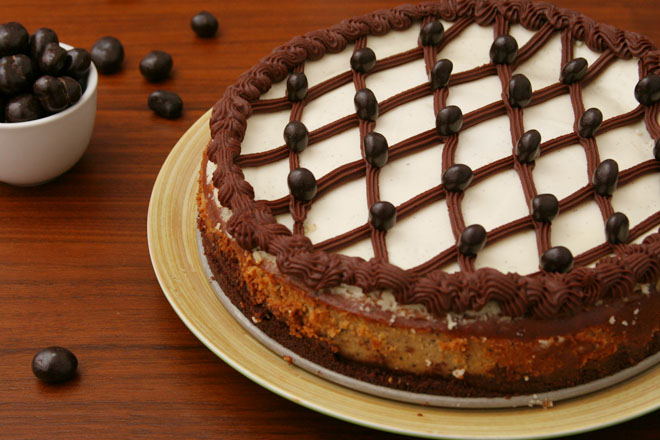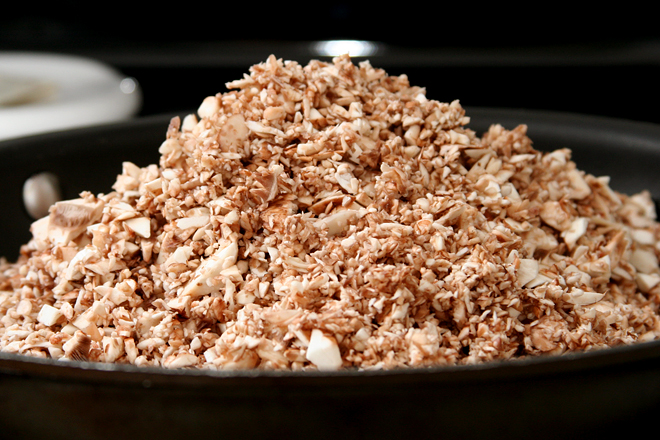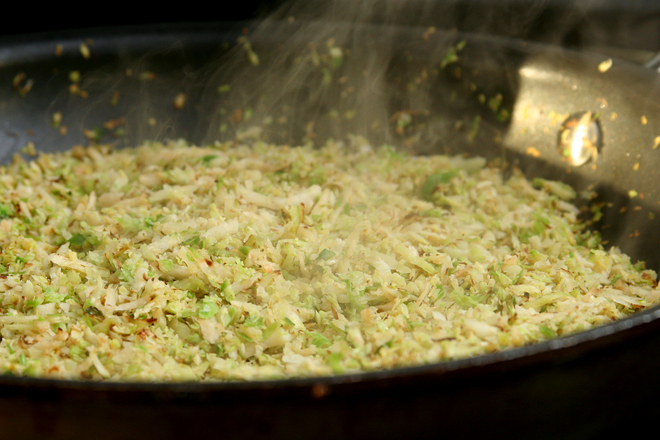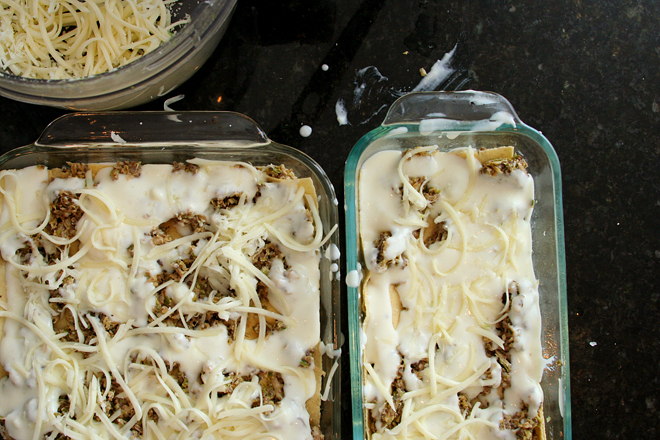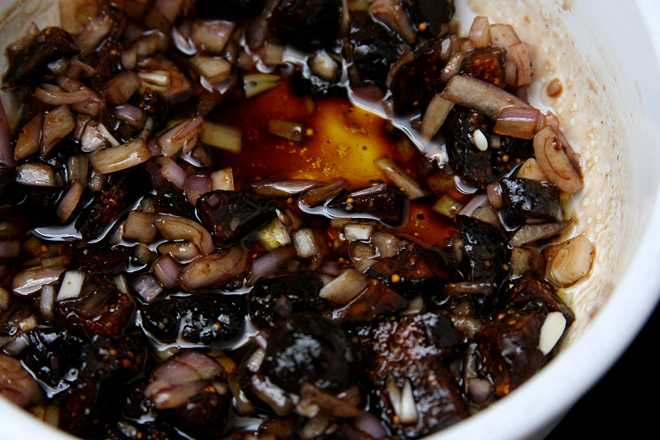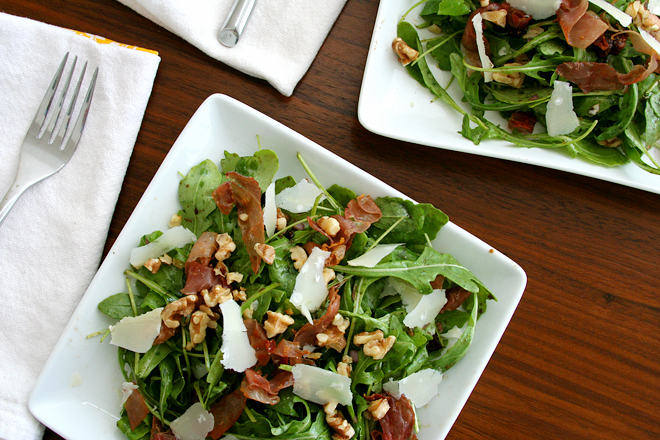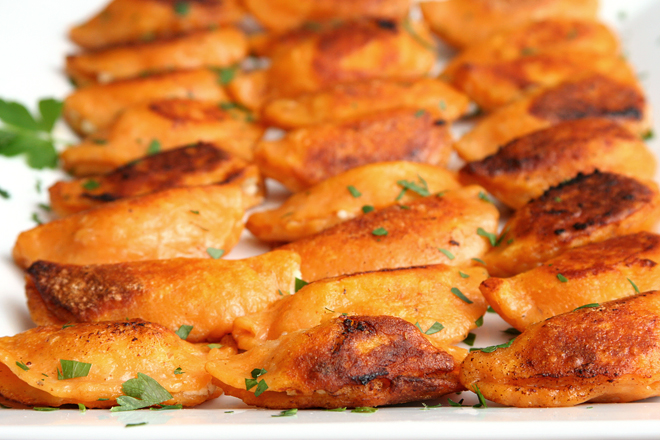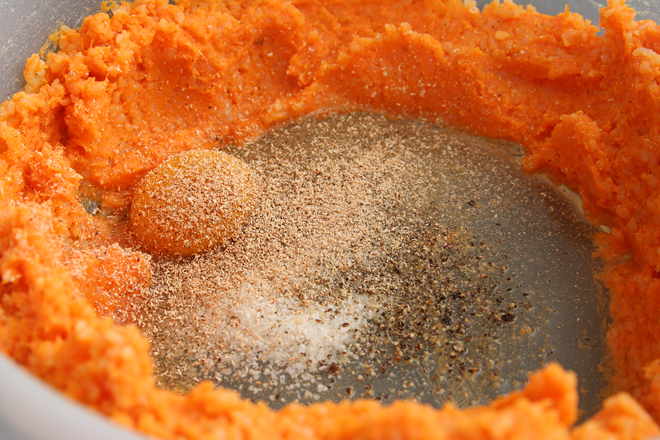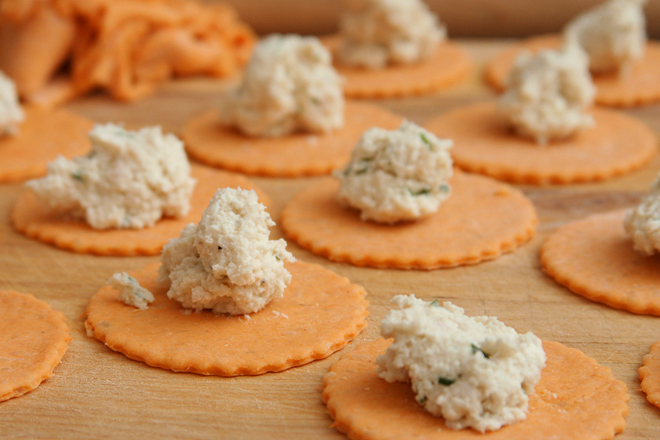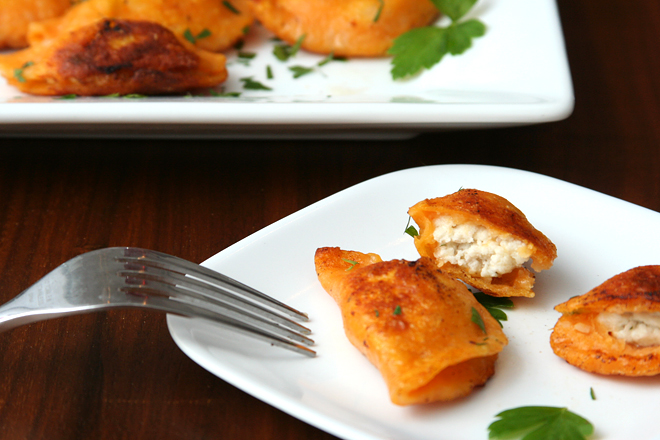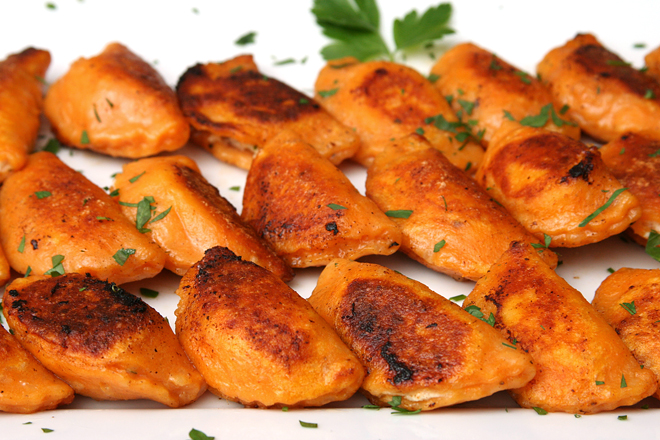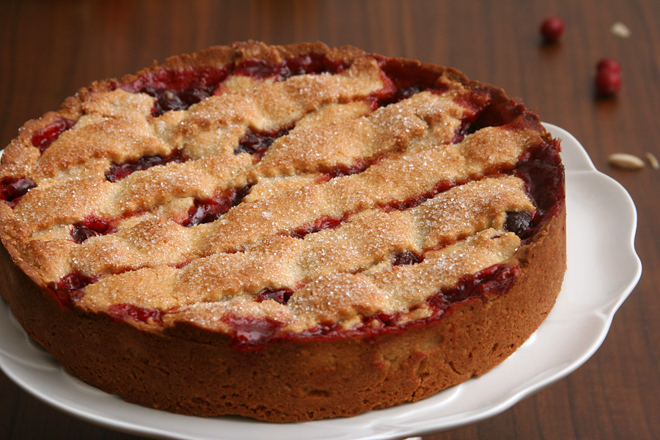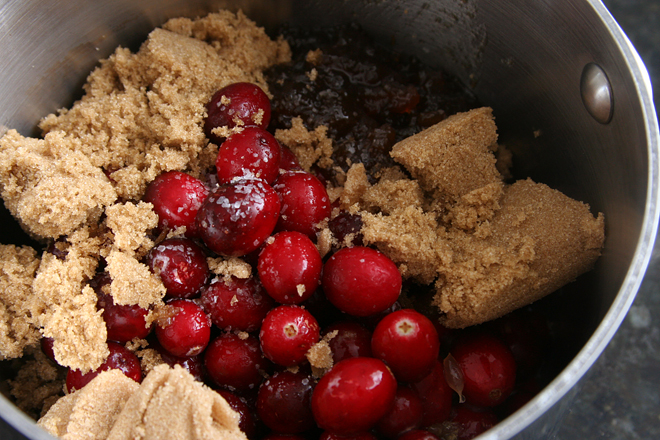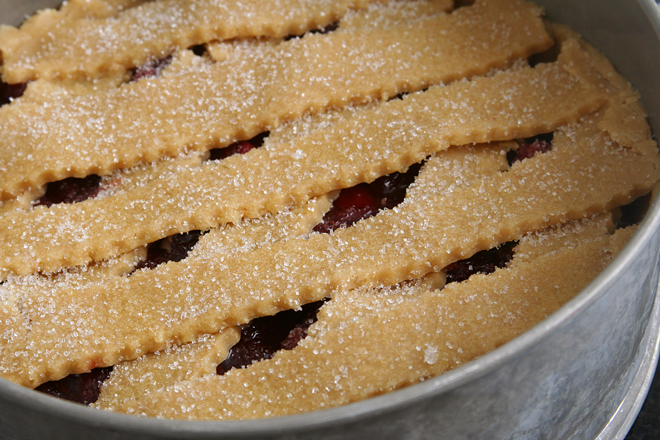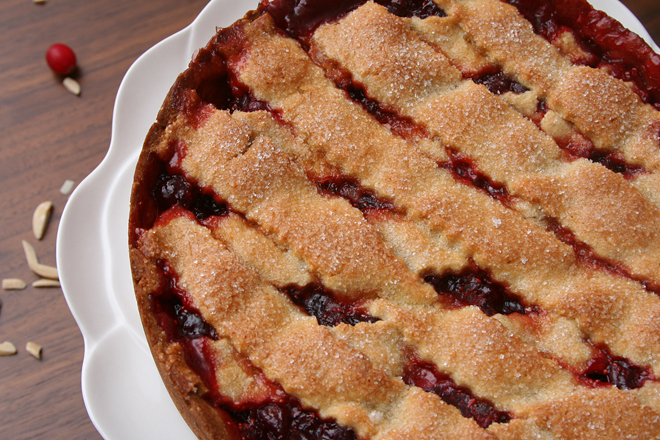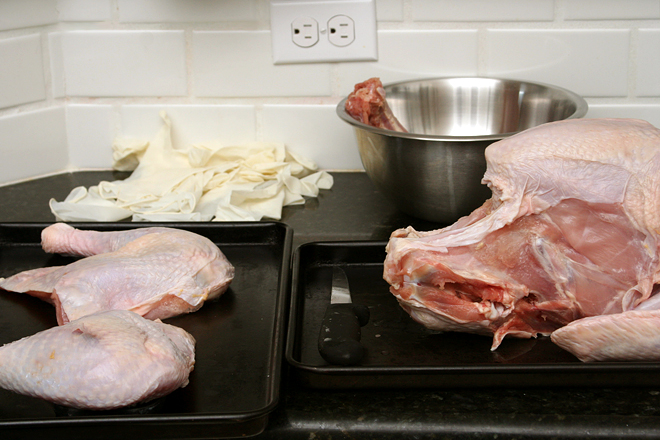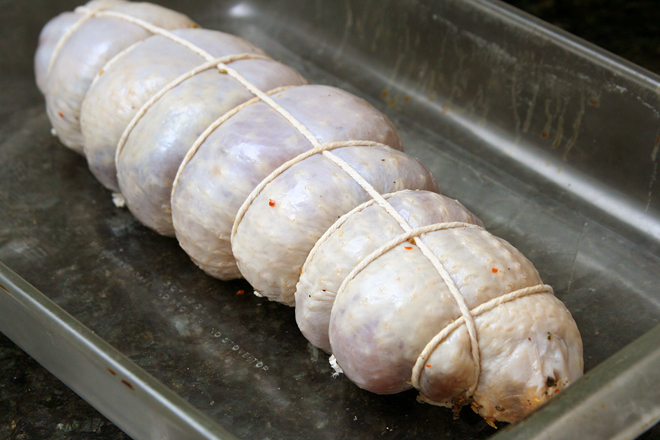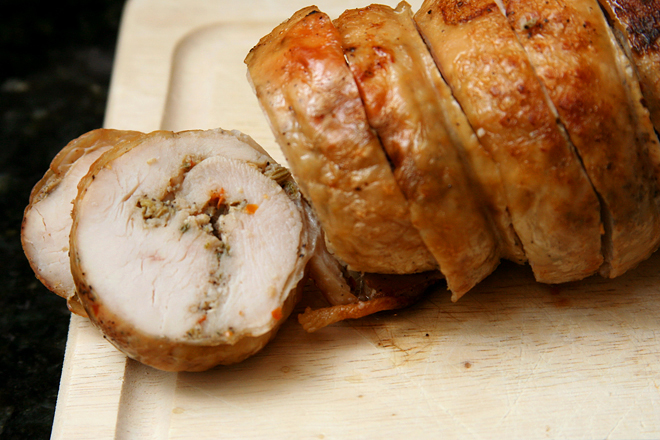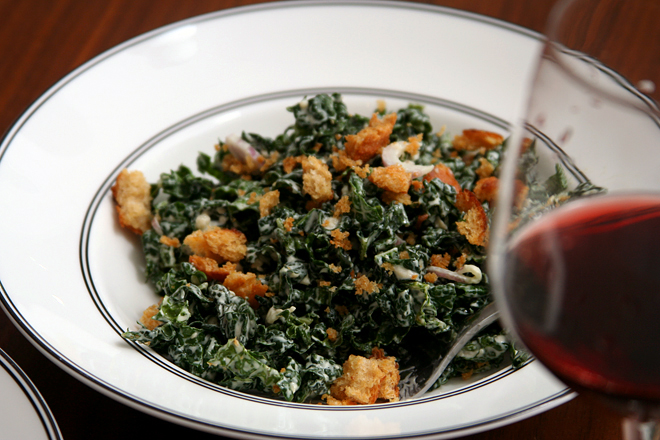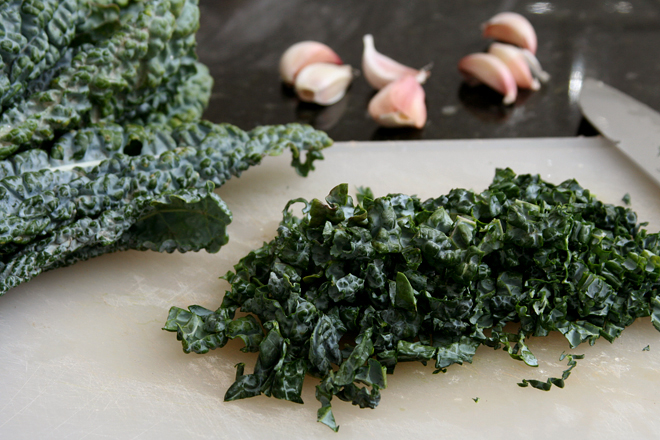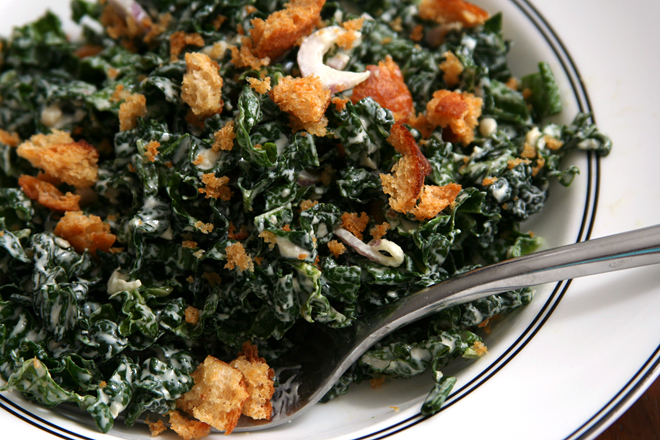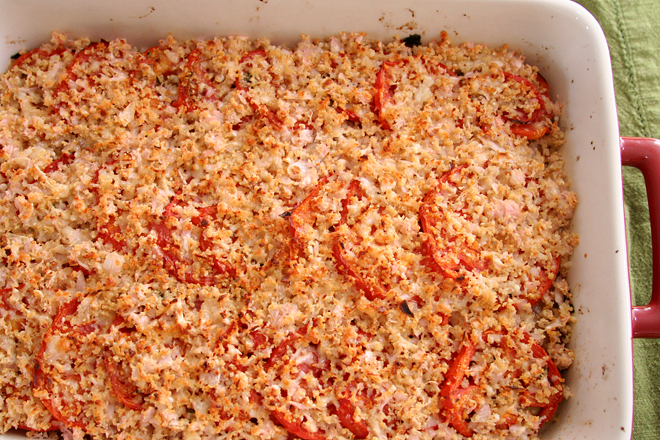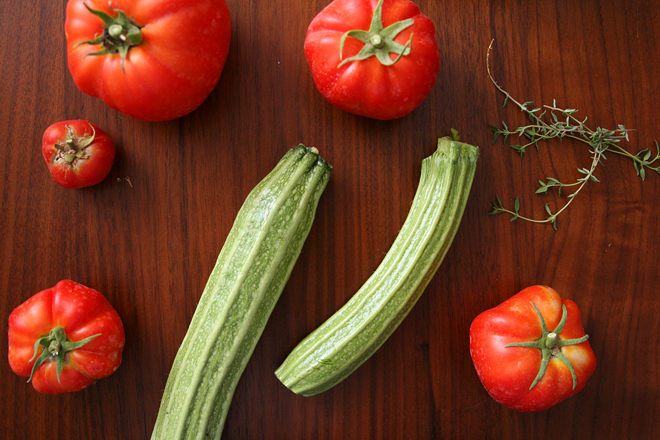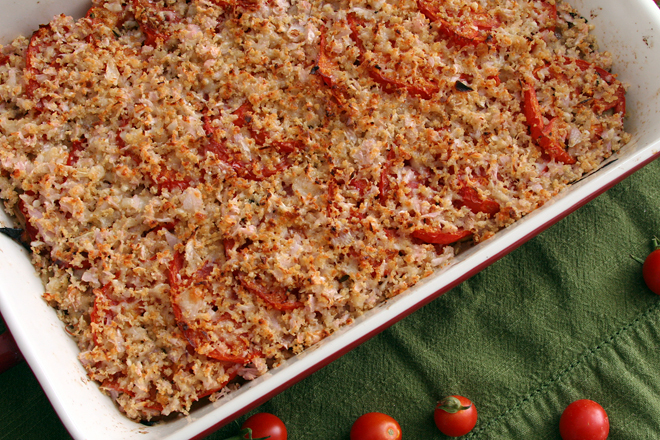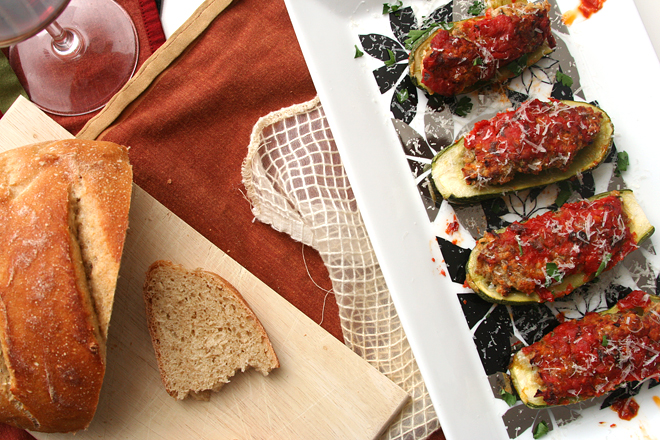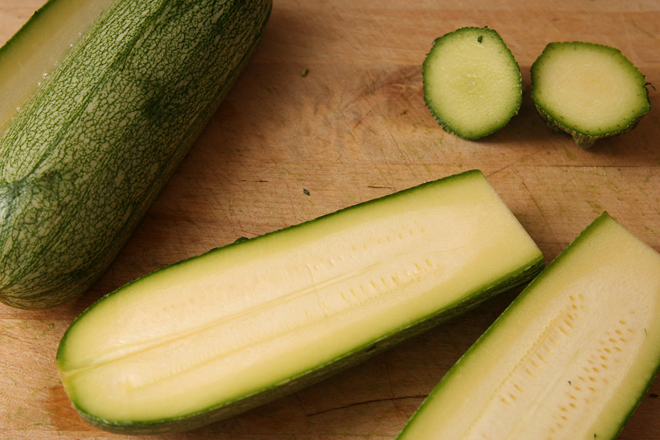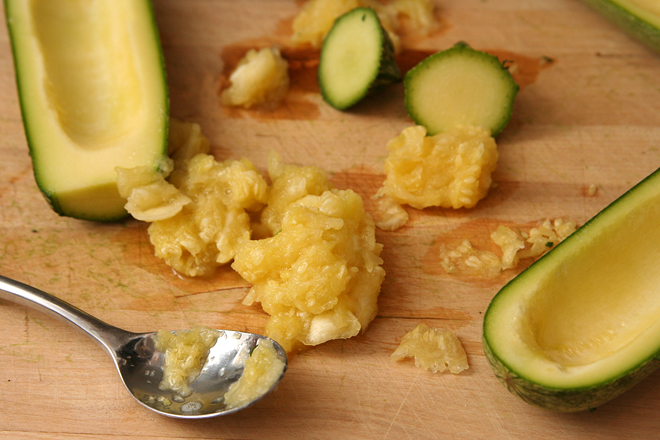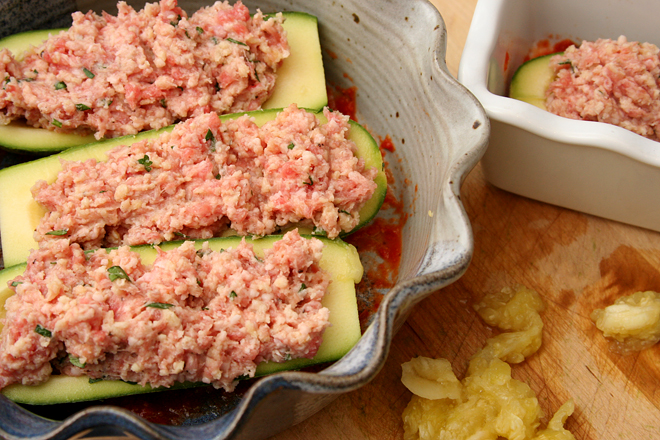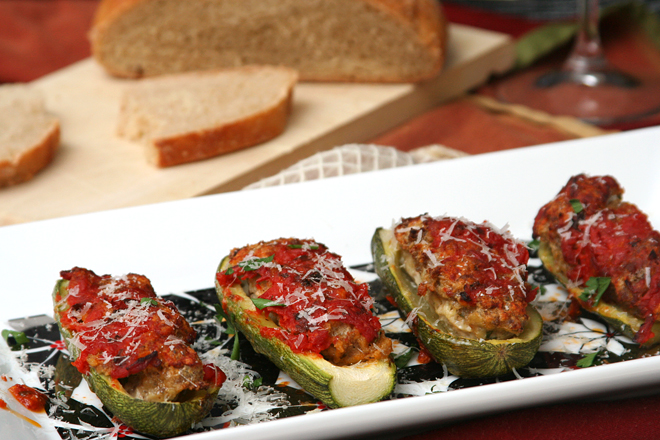I recently made potstickers, and it reminded me how much easier dumplings like these ravioli are to make with homemade dough than with those little square wonton wrappers. With homemade pasta, you have a long strip of dough; after you drop dollops of filling along the strip, you can just fold the whole thing over at once, sealing the long end before cutting in between the filling. Contrast this with individually folding and sealing each square of dough when you use pre-made wonton wrappers. Granted, my method based on homemade dough can only make square dumplings, but it’s so easy that I’m tempted to make square potstickers from now on to avoid individually sealing each one.
This is an easy filling too. The carrots and shallots are roasted in large chunks, browning and sweetening in the oven. The vegetables are transferred to the food processor with ricotta and parmesan, and then your filling is made with the touch of a button.
The sauce, if you can call it that, is simply melted butter with parsley. A generous shaving of parmesan on the ravioli provides some salty contrast to the sweeter filling. Homemade ravioli is one of my favorite starter courses, and it really isn’t that hard – provided you start out with sheets of pasta and not a tedious stack of tiny squares.
Printer Friendly Recipe
Carrot-Ricotta Ravioli with Herbed Butter (slightly adapted from Domenica Marchetti’s The Glorious Vegetables of Italy)
4 main course or 8 first-course servings
3 large carrots (12 ounces), peeled and cut into 1-inch chunks
1 large shallot, quartered
1 tablespoon extra virgin olive oil
Salt and freshly ground pepper
2 teaspoons unsalted butter
1 tablespoon heavy cream
5 ounces (½ cup firmly packed) ricotta
6 tablespoons freshly grated parmesan cheese, plus more for serving
pinch of freshly grated nutmeg
1 large egg yolk
1 recipe fresh pasta dough, rolled to the second-to-last setting on a pasta roller
8 tablespoons (1 stick) unsalted butter
2 tablespoons minced parsley
salt
1. Heat the oven to 400 degrees. In a baking dish, toss the carrots and shallot with the olive oil and season with salt and pepper. Cover with foil and bake for about 30 minutes, until tender and lightly browned. Let cool slightly.
2. In a food processor, combine the carrots, shallot, and cream and puree until smooth. Transfer the puree to a bowl. Stir in the ricotta, parmesan, and nutmeg and season with salt and pepper. Stir in the egg yolk.
3. Place one rounded teaspoon of filling every 2 inches along the length of a pasta sheet. Fold the pasta sheet lengthwise over the filling. Press around each ball of filling to seal the two layers of pasta together. Use a pizza cutter to cut between the filling to form squares of ravioli. Store the ravioli on a dry dish towel. Repeat with the remaining dough and filling. (Ravioli can be formed several hours in advance and covered and refrigerated or can be flash-frozen, then transferred to freezer bags and frozen for several weeks. Do not defrost before cooking.)
4. Bring a large pot of water to a boil; add a tablespoon of salt and lower the heat until the water is at a lively simmer. Meanwhile, in a large skillet over medium heat, melt the butter with ¼ teaspoon salt and the parsley.
5. Boil the ravioli in small batches until al dente, 2 to 3 minutes, using a skimmer or large slotted spoon to remove the ravioli from the boiling water and transfer them directly to the skillet with the butter. Once all the ravioli are boiled, lightly toss them in the butter to thoroughly coat. Serve immediately, topped with additional parmesan.
